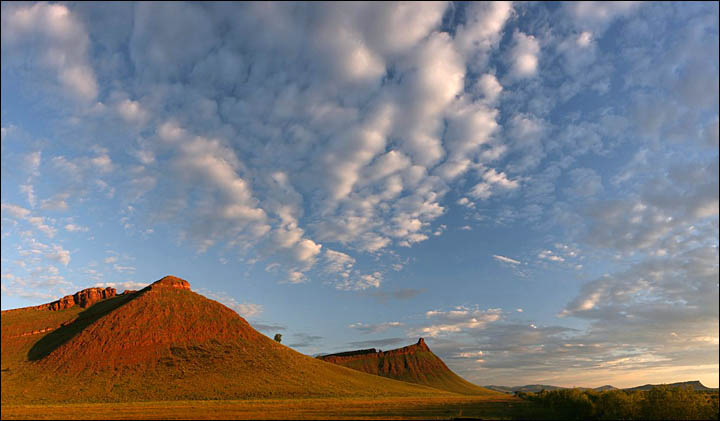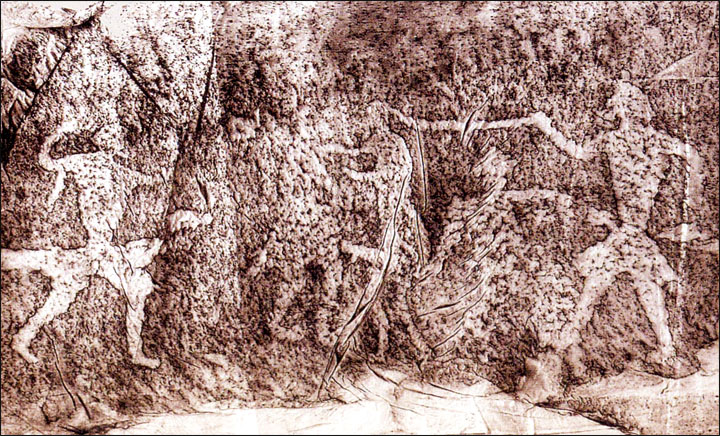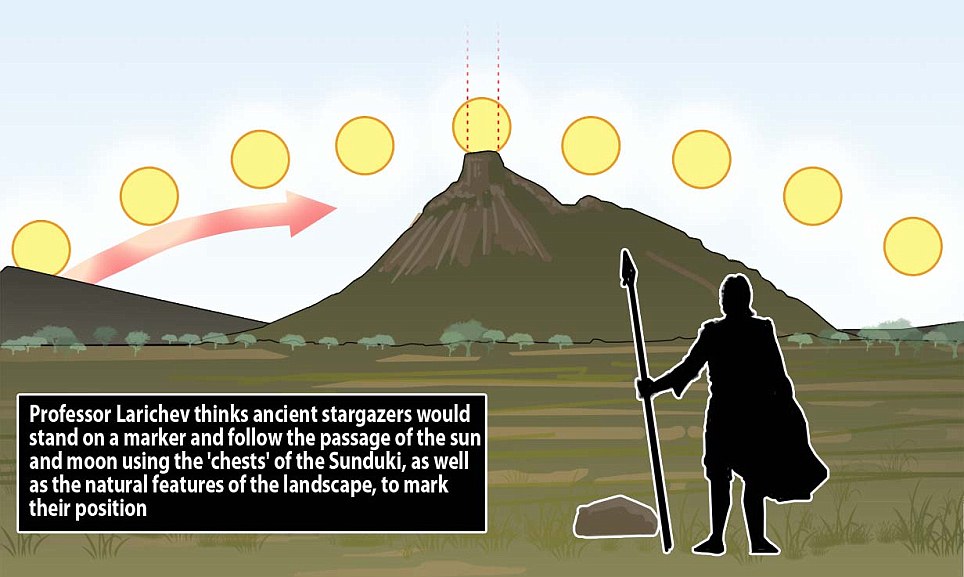Maybe they where made by giants!!! 


Laura said:(L) That's probably where I was going. I was going off to Novosibirtsk. You once made the remark that the secret lies in a mountain pass in Russia and something about a line drawn between Novosibirtsk and Urkutsk. Is there a mountain pass in this area where something important is waiting for us to find it?
A: Yes.

Siberia said:I've been reading the earlier sessions (never read them before) and there is this interesting part:
Laura said:(L) That's probably where I was going. I was going off to Novosibirtsk. You once made the remark that the secret lies in a mountain pass in Russia and something about a line drawn between Novosibirtsk and Urkutsk. Is there a mountain pass in this area where something important is waiting for us to find it?
A: Yes.
Well, these megaliths could probably be considered as lying in a mountain pass along the line drawn between Novosibirtsk and Urkutsk. Here is the map of the area:
Novosibirsk: red dot
Irkutsk: blue dot
Mezhdurechensk (the settlement closest to megaliths): green dot
Maybe it's just my imagination though, so it's just for the record, fwiw.
By Natalya Kukonen and Kate Baklitskaya
19 April 2013
Sunduki is called the Siberian Stonehenge, yet its site is older than the British standing stones, and arguably 'more mysterious'.
Our pictures show the stunning primevil beauty of this place, far from modern city life, but many millennia ago it was perhaps at the apex of civilisation.
Some have even speculated that Hyperborea, known from Greek mythology, may have been here in the modern Republic of Khakassia. Whether or not this is so, respectable scientific opinion now holds that Sunduki is a singular site in understanding our ancestors, and that it has many secrets yet to divulge.
In bygone times, they believe, this was a stargazing capital of the ancient world and a place of devout worship.
In all, Sunduki comprises eight fantastical sandstone mounts rising incongruously from a flood plain on the bank of the Bely Iyus. Parallel to each other, almost equal in size, they are crowned with strange rock hats looking like giant boxes or chests.
The word 'Sunduk' in Russian means 'chest' or 'trunk' which explains how the place got its modern name.

'For many years I tried to unravel these mystery 'chests', said Professor Vitaly Larichev, of the Institute of Archaeology and Ethnography at the Siberian Branch of the Russian Academy of Sciences.
Determined to decode some of the mysteries of Sunduki, he admits he became an 'astro-archeologist'.
'We don't dig in the ground - we study what ancient people knew about astronomy', he said.
'What I discovered was a surprise even to myself. Comparing maps accumulated over many years of astronomical observations, I came to understand that here in Sunduki, we can see the oldest astronomical observatory certainly in Asia. Its age is about 16,000 years old. The ancient inhabitants of this valley daily observed the sunset, the sunrise and the moon'.
And they did so for many thousands of years since then, Larichev contends.
It was 3,500 years ago that the first known sundials existed, found by archeologists in ancient Egypt. Yet without any instruments and gadgets, these ancient Siberian astronomers used giant rocks and chinks in the stone architecture in this Siberian landscape for their calculations and observations.
He claims to have found 'numerous ancient solar and lunar observatories around Sunduki'.
'This square pattern of stones on the ground shows you the place', he told visiting author Kira Van Deusen. 'I knew there would be an orientation point, but we had to search through the grass for a long time to find it.
'Now look up to the top of that ridge. You see a place where there is a crack between the rocks? If you were here on the summer solstice, you would see the sun rise right there. Or you would if you were here 2,000 years so. Now the timing is slightly differen'.
High on one cliff wall is a rock engraving showing dragon heads in one direction, and snake heads in the other.
'If the sun were shining, we could tell the time,' he said. 'In the morning the shadow moves along the snake's body from his head to his tail, and in the afternoon it comes from the other direction along the dragon.
'From the same observation point you can determine true north and south by sighting along the mountains'.
There is a gallery of rock art. Some dates back several centuries BC and so is relatively modern.
But a mysterious white horse found not far from the first 'chest' on Black Mountain was carved in the rock and is well preserved - yet scientists suggest that this petroglyph appeared 16,000 years ago, during the Ice Age, establishing this as a site of human activity over many millennia.
It was 'the home of gods, great artists and sky watchers', said the professor.
It was more than this, too.
There are also burial mounds and other manmade constructions - including irrigation channels - which have yet to be fully investigated.



 , i'm sure there was much more practical purpose
, i'm sure there was much more practical purpose 
Possibility of Being said:There is another amazing and mysterious place east of Novosibirtsk. On Siberia's map above, it is placed very close, north-east of the green dot; you can see a boot-like area marked there and the 'toe' points to a village of Shira (Шира). That's where it is, more or less.


Anam Cara said:Wow! those photos are just incredible!!! :)
Before I found the English translation button on that webpage, I translated one of the Russian comments, which seemed to suggest they were sited in an area "15 km from Belokurikha (Altay territory)", where there have been 'light beams' such as the "Belokurikha flame".
Such phenomena has been researched in this paper "PLANETOPHYSICAL FUNCTION OF VACUUM DOMAINS", which appears to corroborate the EM nature of various earth change manifestations (hurricanes, earthquakes etc) and ball lightning, strange lights etc, which the Cs often mention.
The Russian authors from Gorno-Altaisk state University, have developed a model of united electrogravidynamics based on the Maxwell's electrodynamics and Heaviside's (Minkovski's, Poincare's) gravidynamics. The model introduces a new object of study --- a vacuum domain.
Vacuum domains in the model possess a set of specific features which include penetration through any kind of matter, where the VD's introduce the electric, magnetic, gravitational, spin fields and the distributed angular momentum. Inside the VDs penetrating gravispin waves (gravitons) are transformed into the electromagnetic waves (photons) To all the Earth shells from magnetosphere to mantle the VDs bring electric circuits and discharges, magnetic variations and pulses, mechanical stresses and changes in the velocity and intensity of chemical reactions in atmosphere, heliosphere and lithosphere: all these phenomena being unexplainable by classic theories.. VDs are localized in lithosphere in the conductive and elastic media, where they may produce pulsed heat release ( such as " contact heat explosions" forming kimberlite pipes) and produce enormous torsion stress affecting the nature of tectonophysical processes and the seismic regime of the Earth.
VDs are identified with manifold natural self-luminous objects of different kinds, such as ball lightnings, "plasmoids", poltergeist, tornadoes, "angels", "small comets or atmospheric holes", ionosphere and atmospheric explosions, lithosphere explosion tubes, "sprites", the glows connected with the earthquakes and the volcanic eruptions. That's why the study of natural self-luminous formations provide the experimental foundation for the development of physical and mathematical model of non-homogeneous physical vacuum and vacuum domains.
http://tmgnow.com/repository/planetary/pfvd.html
Seaniebawn said:This tread is absolutely fascinating, if they are dated to be around 16,000 years old this would put them before the younger dryas event
